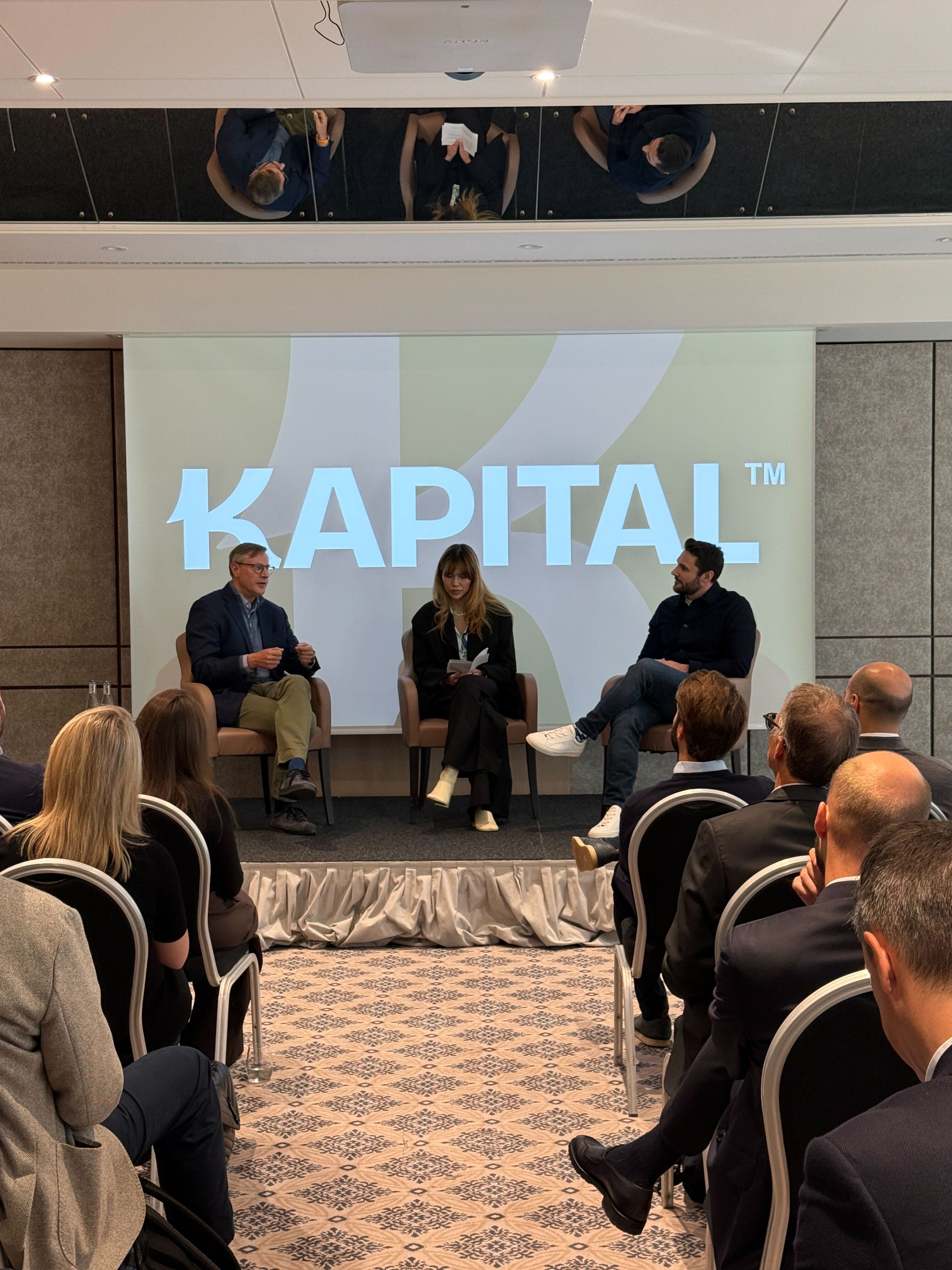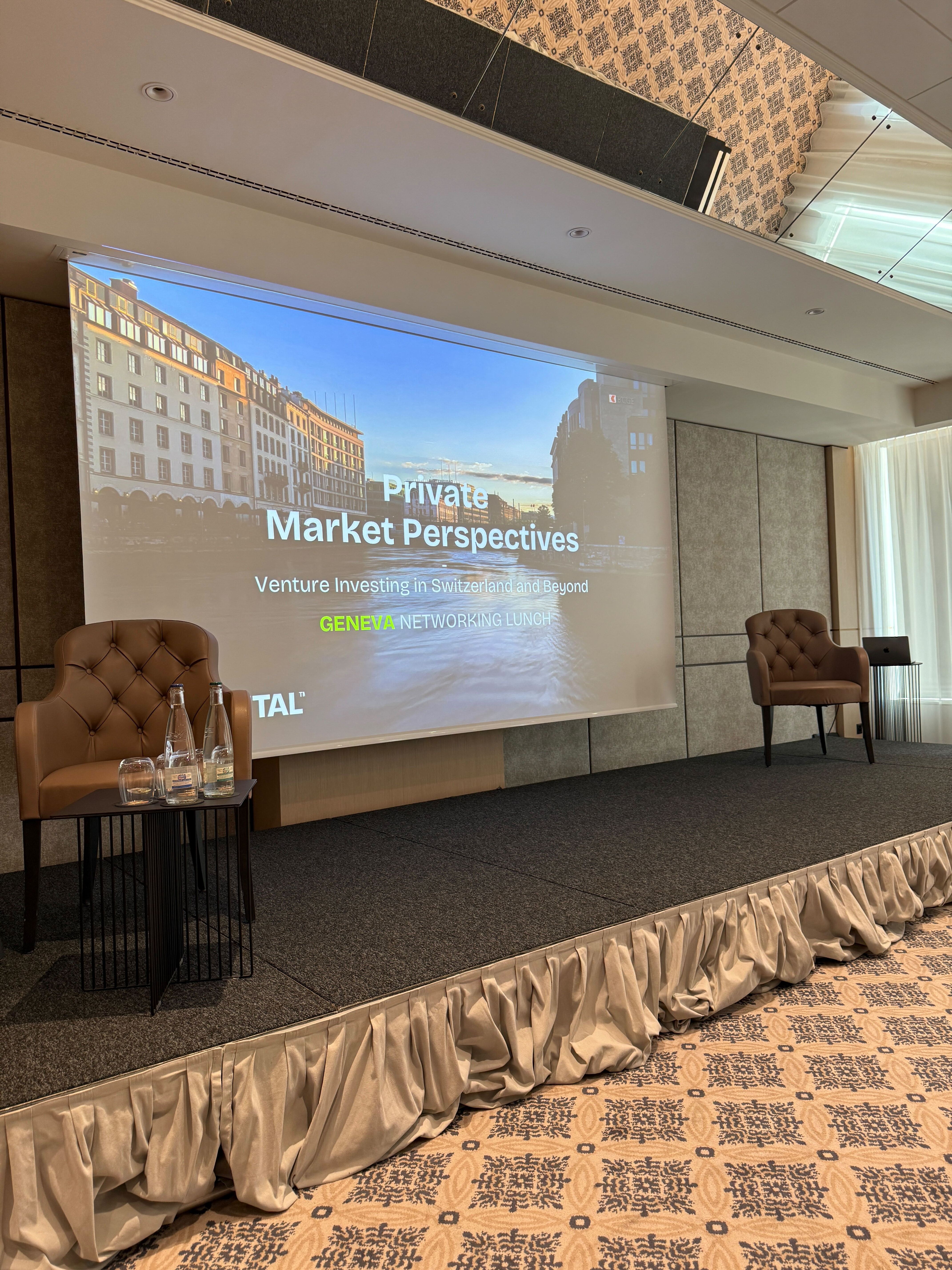At our recent Private Market Perspective lunch in Geneva, KAPITAL hosted a fireside chat with Gaetano Zanon, Managing Partner at VI Partners, and Luke Carroll, CIO of Reference Capital. The discussion offered a clear picture of how Switzerland’s venture ecosystem has evolved, where challenges remain, and what investors need to succeed in the coming years.
Switzerland’s transformation
When VI Partners launched in 2001, Swiss venture capital was almost invisible on the global map. Annual allocations were under CHF 50 million. “Back then, we had great research institutions, but very little risk capital to turn ideas into companies,” Gaetano reflected.
Two decades later, the numbers tell a different story. Switzerland now attracts more than CHF 2 billion in venture funding every year, placing it among Europe’s top five hubs. ETH Zurich and EPFL Lausanne have become magnets for entrepreneurial talent, producing startups in life sciences, robotics, energy, and artificial intelligence.
“Life sciences still represent about half of the capital deployed,” Gaetano explained, “but the ecosystem has broadened significantly. Enterprise software, climate, and deep tech are no longer side categories. They are becoming central pillars.”
Equally important, founder ambition has changed. In the early years, many aimed for trade sales in the CHF 50 to 100 million range. Today’s founders build for global scale, IPOs, and billion-dollar outcomes.
Venture as a power law business
Luke Carroll brought a global perspective from Geneva. Reference Capital operates at the intersection of advisory and active venture investing, with exposure across the US, Europe, and beyond.
“Venture is a power law asset class,” Luke observed. “The majority of funds do not outperform public markets, but the top decile generates exponential returns. The real challenge for investors is access.”
Top-tier US funds remain oversubscribed, often turning away even longstanding limited partners. Europe offers more attractive valuations, but capital fragmentation still creates barriers. “It is very hard to scale a Series B or C company in Europe without US investors stepping in,” Luke said.
Exits and liquidity
Liquidity remains Europe’s weakest point. IPO markets are shallow, fragmented, and lack the scale of Nasdaq. “If you want to go public, you still look to the US, not Zurich,” Gaetano said.
There are, however, encouraging signs. Mergers and acquisitions are picking up, particularly in biotech where global pharmaceutical companies rely on acquisitions to fuel innovation. Tech exits are also becoming more frequent, including billion-dollar deals in AI and fintech. The rise of secondary markets is giving limited partners interim liquidity options even when IPO windows remain closed.

Artificial intelligence in venture
Artificial intelligence is now impossible to ignore in any discussion on venture investing. Both speakers highlighted AI as one of the most transformative forces shaping the next decade of innovation.
Gaetano emphasized that VI Partners has been investing in the space since 2019, when it was still more commonly called machine learning. “At the time, it was not fashionable,” he noted, “but the potential for applied AI was already clear.” For VI, the most compelling opportunities are not in building new foundation models, but in vertical applications and the enabling infrastructure that makes adoption possible. “We are excited about companies applying AI to specific industries, such as financial services automation, where the use cases are clear and the business models are sustainable.”
Luke pointed out that the impact goes beyond technology companies themselves. AI is set to reshape entire industries and the way capital is deployed into them. He described opportunities ranging from personalized health and biohacking, to wealth democratization, to the development of smart cities and autonomous infrastructure. “The long-term value creation will not only come from the technology itself, but from the ecosystems built around it.”
Both agreed that while hype levels are high, the structural impact of AI is undeniable. The challenge for investors will be distinguishing between speculative plays and durable value creation. That distinction is exactly where experienced venture managers, and the right structuring solutions for investors, become essential.
Changing investor dynamics
Both speakers agreed that the investor base is evolving. In Switzerland, institutional allocations to venture remain low, typically well under one percent of portfolios. Family offices and private wealth are now the main source of capital.
For Luke, this creates both challenges and opportunities. “Family offices want exposure, but they need structures that are bankable and operationally simple. That is why SPVs and feeder funds are becoming more popular. They allow targeted exposure without the burden of a blind-pool commitment.”
This is where firms like KAPITAL step in. Reference Capital, Luke’s firm, has already partnered with KAPITAL to structure feeder solutions that open access to top-tier private market opportunities. By making these allocations bankable and standardized, KAPITAL enabled Reference Capital to scale participation from wealth managers and family offices, without adding operational complexity.
Gaetano added that even established managers like VI Partners are rethinking their fundraising approach. “We cannot only rely on the same institutional backers. To grow, we need to reach wealth managers and next-generation investors. That means lowering ticket sizes, simplifying access, and reducing the operational load.”
The conversation underscored a crucial point: Switzerland’s venture ecosystem is stronger than ever. Founders are more ambitious, deal flow is robust, and international investors are taking notice. To reach its full potential, however, the market needs solutions that remove barriers and make access to venture investing more simple.
KAPITAL's role in Private Markets
KAPITAL supports asset and wealth managers as the back office behind their private market deals by making them bankable, scalable, and accessible. This means:
- Issuing ISIN-coded products that integrate seamlessly into custodian banks.
- Designing feeder vehicles and SPVs that open opportunities to investors who would otherwise be excluded.
- Helping fund managers unlock access to a broader investor base by structuring vehicles that meet the needs of wealth managers and family offices, while keeping products fully bankable
We thank our speakers Gaetano and Luke for sharing their perspective on the developing Venture ecosystem of Switzerland and beyond and outlooks on the future of this asset class.
This article was written as part of our Private Market Perspective series, to learn more about KAPITAL or our upcoming Private Market Perspective events in Geneva or Paris, please reach out to our team at elisabeth@kapital.inc


